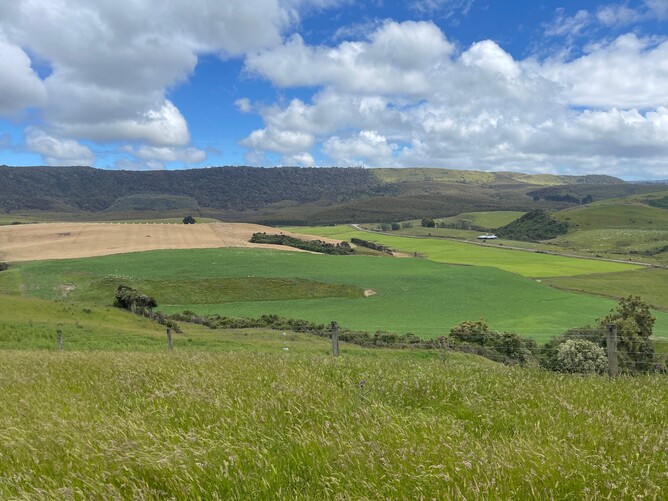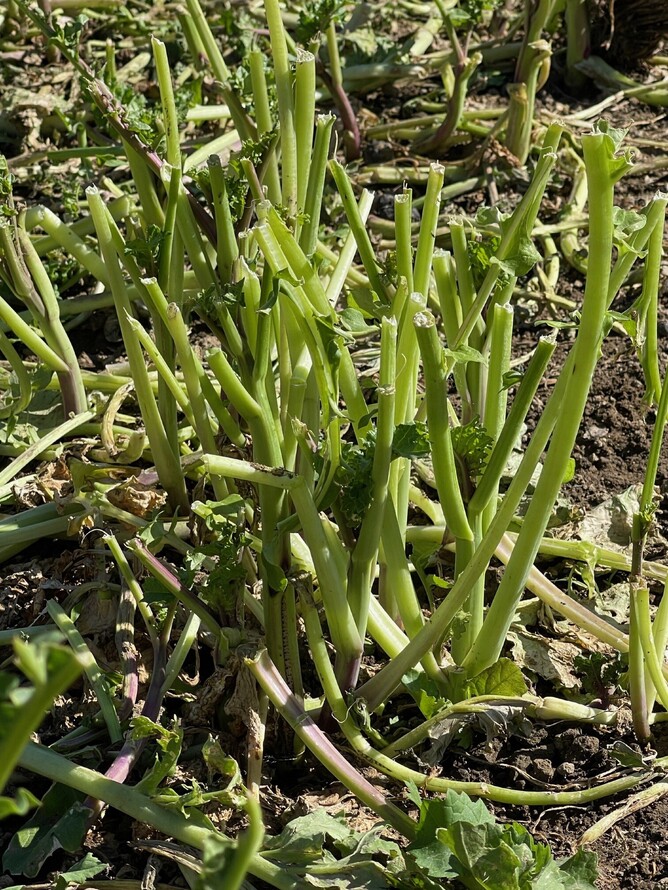Are they worth it? Hear how a Raphno brassica crop is helping to put kgs onto one Southland farmer's terminal lambs this year.
With summer brassicas gaining popularity among Southland farmers looking to boost their lambs along, we thought it would be worthwhile getting a farmer's take on them...
Speeding up KGs at the gate
With lamb prices…disappointing at the moment (that’s one word for it), the only thing we have any control of as farmers is lamb weight.
Our lambs have always been straight Romneys and we have put a lot of work into improving our breeding to get better results with them, which we have managed to do - regularly getting them to 20kg on the hooks. However, they are later to finish and, while this has had some upsides, with us being able to take advantage of late season lifts in price, our cash flow takes a hit at the start of the year (which coincides with a lot of big bills coming in). So, the obvious next step was to look at terminal breeds.
We introduced some Suftex rams last year, with the aim of getting some meat breed lambs away earlier in the season. To capitalise on these lambs, and after many discussions with our seed rep, we decided to trial a summer fattening crop to help speed up getting the kgs onto them. A double "shot in the farm", if you like!
We landed on Raphno, with the idea that we could use it in summer to fatten lambs and then have a third or even fourth grazing of it in the winter.
Grazing management
We gave last winter’s swede crop ground a rotorspike and then sowed out all 8ha in Raphno Ultrastrike back in early November.
After the required 42 day grazing withhold, we put the supplied road cone into the crop and waited until the Raphno grew to the reflector strip, signifying it was ready to graze.
On the 1st Jan, we were good to go, so we weighed off our heaviest terminal lambs and put them onto crop. The recommended stocking rate is 50/ha, but we put ours on at a slightly heavier rate as we weren't going to be grazing behind a hot wire and didn't want to lose the quality of the crop.
They seemed to take to it well. It is noticeably sweeter to the taste than other brassicas (of course we had to see for ourselves).
Getting the most out of it
Our seed rep came out in mid-January to check on progress and advised us to graze it down as low as possible to get the best quality regrowth.
In fact, they recommend topping if you can't graze it down for the same reason (which seems like a waste when something could be converting it into kgs)!
We had planned to leave the lambs on the crop for around 4 weeks, but ended up taking them off after around 3 weeks of grazing for a weigh up.
While they looked big and healthy, the higher stocking rate meant that they weren't getting access to as much quality crop for as long and we didn't want them to go backwards.
Worthwhile investment?
We are confident that the first grazing of the Raphno has done a good job of bulking the lambs up quickly and it meant they were concentrated on one paddock, rather than needing shifting across other young grass paddocks. This also freed those other good paddocks up for other stock types.
The verdict?
So far, so good. We are pleased with how the lambs are looking after the first grazing and are optimistic that we can further improve our results/utilisation in the next grazing, before shutting it up for winter.
The true test will be its performance over winter, when we really need the extra feed!



